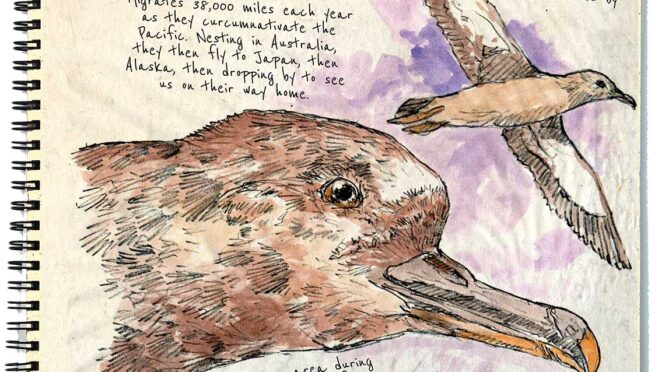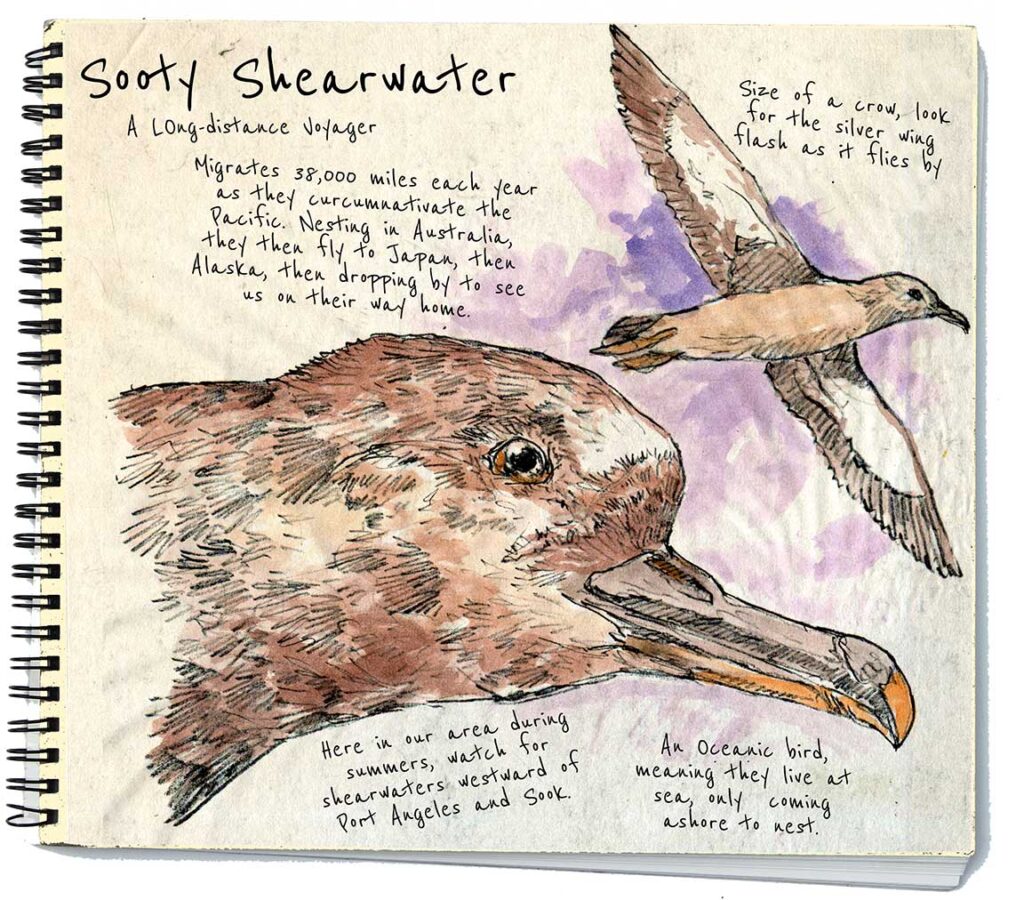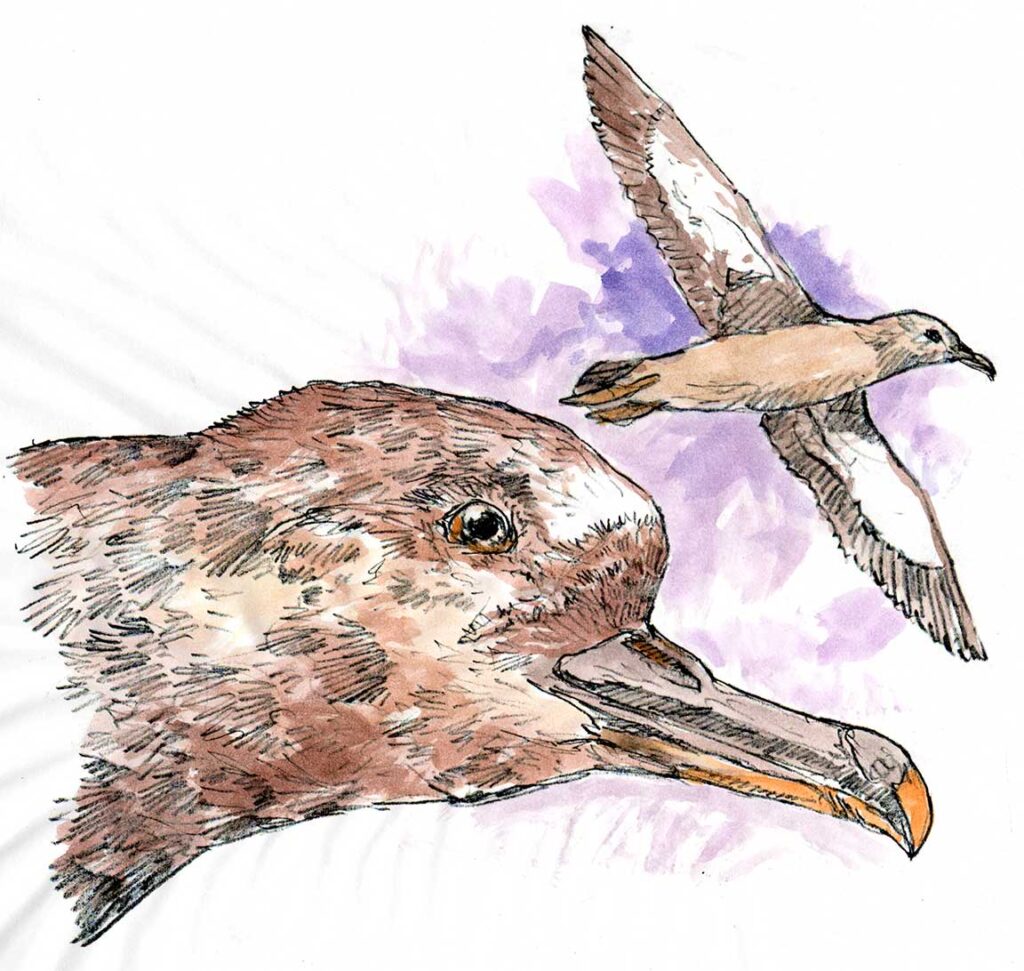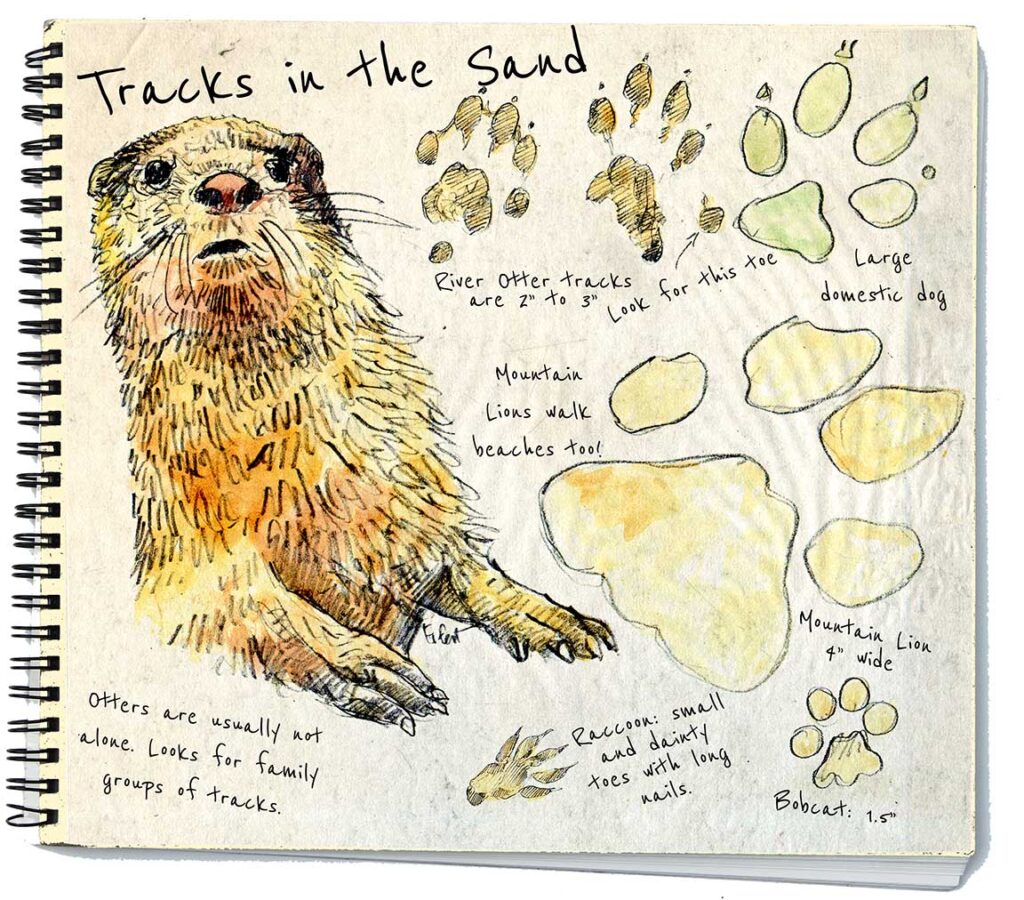These two stories were published back in early summer in 48 North magazine. I always give the magazine first showing, wait a bit and then publish here, too. This first story was about a rather amazing little bird that migrates 38,000 miles each year, circumnavigating the Pacific, and in early summer they stop by here. Take a minute and read the brief little story after the paintings. Times are tough for wildlife, but this guy makes me want to make sure they continue their solitary lives in a healthy way. I know I’m preaching to the choir here, but this means: VOTE! All of us, you and me, and these little birds will have a better chance if you do. For the first time in my long life, I see an election that is truly critical to our continued existence.
Published in a magazine that has sailing stories, I wrote about what you’d see offshore west of my home in Port Townsend, Washington. I’ve been out there and seen these little birds myself.
I hear you’re voyaging to Barkley Sound or Down-the-Outside this summer! When you’re out there, keep a sharp watch for this little crow-sized bird soaring past, sailing along like a miniature albatross. If you see one, you’ll be getting to know a REAL voyager. These small birds fly with quick stiff wingbeats and soar low over waves, using the uplifting power of air coming off the swells to expend little energy to keep aloft. They need that, because these oceanic aviators go astounding distances. Each year, they fly from nesting burrows or rock crevices on islands around New Zealand, Australia and South America, and head north, following a figure-8 pattern. Passing Japan in April, they head to the arctic and then pass us in the Northwest on their way back home.
In all, that’s 38,000 miles, or 1.5times the distance around the Earth. (Only arctic terns make a longer flight each year.) While doing this, they only rarely meet other shearwaters, and yet there are 20 -30 million of them doing this – and there’s a second race in the Atlantic flying a similar route. Imagine! When they all get back home for nesting season in the Southern Hemisphere, they get together, sometimes in massive flocks (probably to catch up on things). Watch for the silver wing flashes and a dull brown coloration – stiff wings and a plump body. Shearwaters are proof to me that, while we’re generally busy goofing things up, there are creatures out there that are pretty much oblivious to our presence.
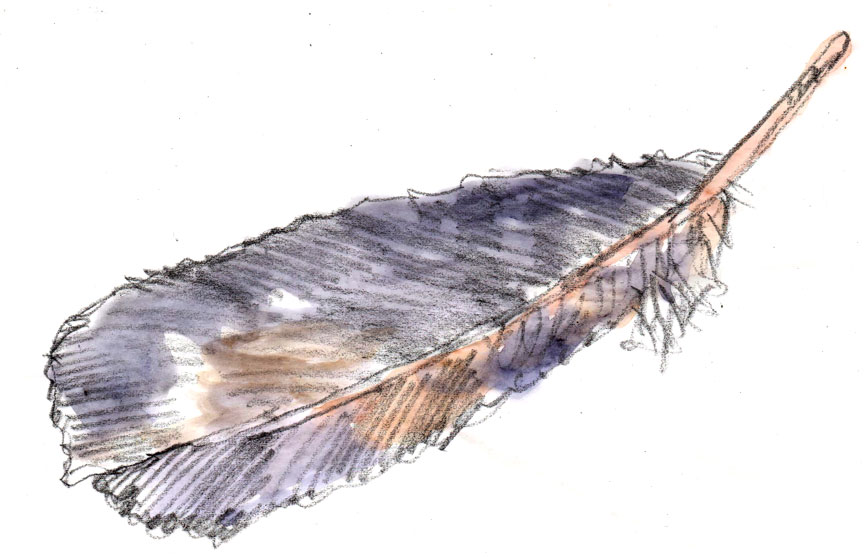
Tracks in the Sand
This second story, published this summer, isn’t about the wildlife as much as it’s about the tracks left by them. You don’t need to ‘see’ the otter to know it was just there, ambling down the same beach you’re on now. And, if you know what you’re looking at, you realize it might not be an otter, but something else. The tracks in the illustration were life-size.
Here’s the story that went with the paintings:
Land your boat on a sandy beach and you’ll probably soon see animal tracks in the sand. The most common are dog, bobcat, mountain lion, river otter and people. If you’re lucky, it’s a mix of all four. River otters remind me of an extremely hairy dachshund, same size (to 30 pounds and 3 to 4 feet including tail. Their fur is long and thick, keeping them warm swimming in our cold waters. The long and strong trail helps propel them like a sculling oar, but they are also at home on land and can run up to 15 miles an hour. I’ve been cornered in a parking lot by an entire family of them.
The tracks in the sand you see could very well be river otters, but not sea otters that rarely come ashore and aren’t common in the Salish Sea anyway. Look for details. The hind feet show a single claw apart from the other four. Front feet show all five like a dog. All will show front claws and you might even see the connecting web between the toes. Dogs show claws, but not the separated hind toe. Cougars have huge prints like big dogs, but don’t show claws. Bobcat track: only 1.5” across and only four toes show. Here’s the thing to remember. It matters little that you actually SAW the critter that made the track, because you saw proof it was here. I’d say that’s good enough.
I have a long history with 48 North magazine and their parent organization, The Northwest Maritime Center, based in Port Townsend, WA. In the 90’s and early 2000s, I was on the board of the Wooden Boat Foundation, Nancy was store chandler selling all manner of wooden boat equipment – and now here I am, still plugging away at making art for the same group – but these days it’s published in their magazine. I enjoy these brief monthly forays into aquatic nature. I learn a lot.
Thanks for reading this week. You can sign up for emails for these posts on my website at larryeifert.com.
Larry Eifert
Here’s my Facebook fan page. I post lots of other stuff there.
Click here to go to our main website – with jigsaw puzzles, prints, interpretive portfolios and lots of other stuff.
Nancy’s web portfolio of stunning photography and paintings.
And here to go to Virginia Eifert’s website.
